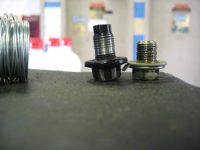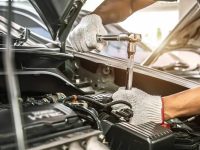Car Detailing: Advantages Of Using Paint Protection Film

Have you just bought a new car or had a multi-stage paint correction installed? You will want security and protection before the dirt, bugs, birds, and road grime gets to it. It is easy to do with the abundance of paint sealants, waxes, and ceramic coatings readily available in the market.
But, what about the stone chips, scuffs, and scratches? Driving your car daily means you can’t escape the wear and tear. Frequent road trips and long commutes on the highway will have the front end hammered by the debris and flying rocks from the road. The best professionally-applied ceramic doesn’t guarantee the protection of the paint from mechanical damage. So, you need paint protection film melbourne service.
What is paint protection film?
The paint protection film is a thick transparent layer applied on top of the panels’ body to protect the paint underneath. The thick transparent layer is urethane, a polymer used in the automotive industry. Modern cars have urethane bumpers, urethane insulation, interior components, and seals. It is a very strong material, chemically stable, flexible, and resistant to UV degradation. It is applied on top of the vehicle that serves as the second skin to the body panels, protecting the paint from damage, such as:
- Scratches
- Dings
- Paint chips
- UV
- Chemical erosion
The paint protection film was invented to secure helicopter rotor blades from flying debris, shrapnel, and dust. It worked well and is used today. Race teams noticed and realized that transparent lightweight film can help protect race cars from these damage-causing objects and contact during close-quarters driving. Nowadays, the paint protection film is protecting hundreds of thousands of cars from daily grit.
How does paint protection film work?
Paint protection film comes in ready-to-use material. A release liner protects the other layers and will keep them clean after installation.
The adhesive binds the paint protection film making it 100% removable without damaging or altering the paint. The urethane layer will work on the protection of the car paint. The thickest portion of the film comes to about 6 mils. Once a rock flies onto the car, it contacts with a jagged edge, which focuses all of the impact energy into a small area.
The automotive paint is thin and not very flexible, it cracks and chips away. In a couple of years of driving, it will be exposed to the airstream, from fenders, front bumper, rocker panels, hood, etc. Once this happens, the pain never goes to be perfect again. Touch up the chipped areas and reapply the clear coat with enough polishing.
After PPF application
Repainting a car can be more expensive than applying a paint protection film. So, it is best to apply PPF to protect the car paint from damage, which can make the car’s appearance no longer pleasant to the eyes.
When PPF is applied, the urethane layer is flexed when impacted, absorbs the force, and spreads much wider, thus saving the car paint.







